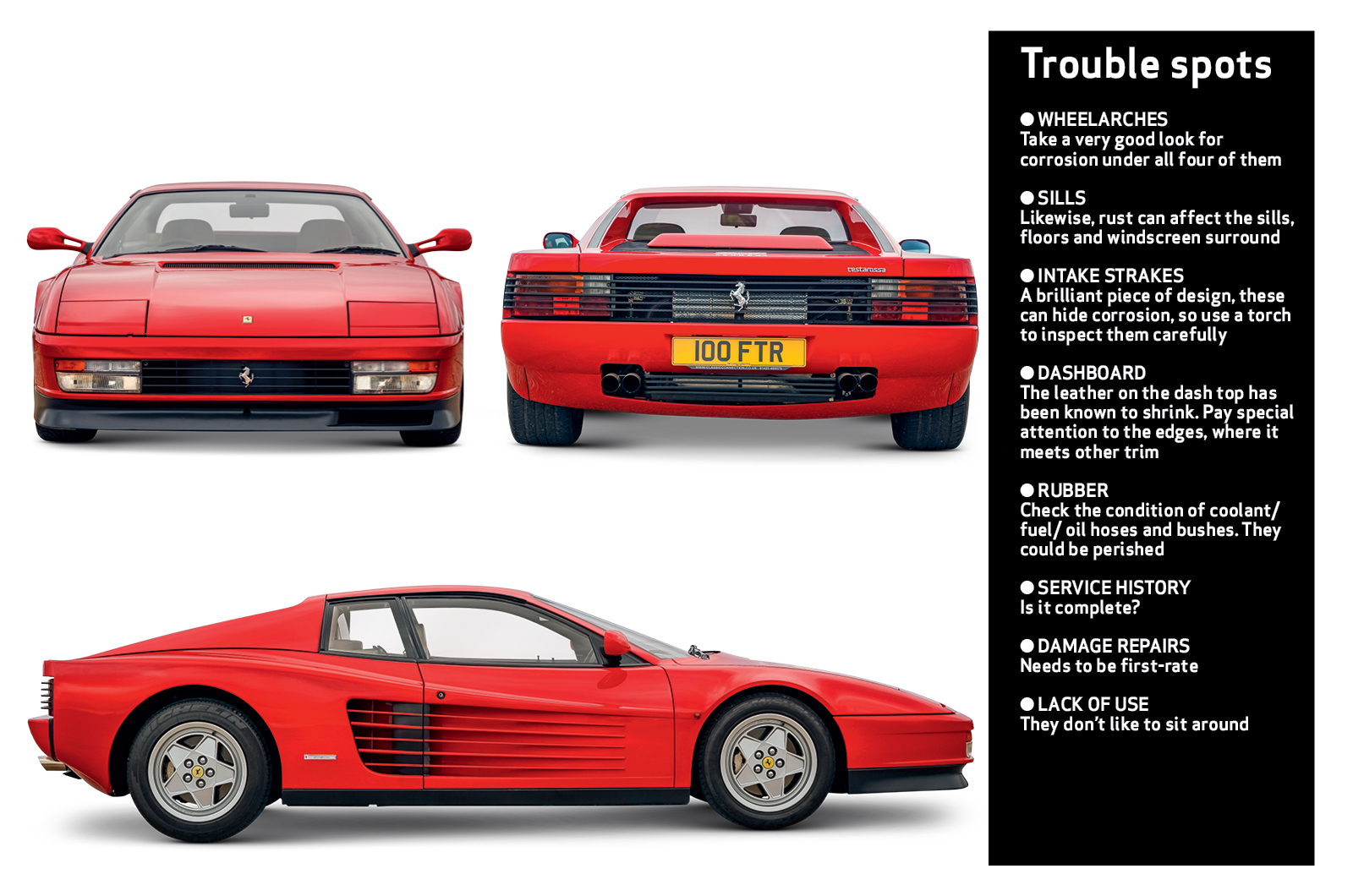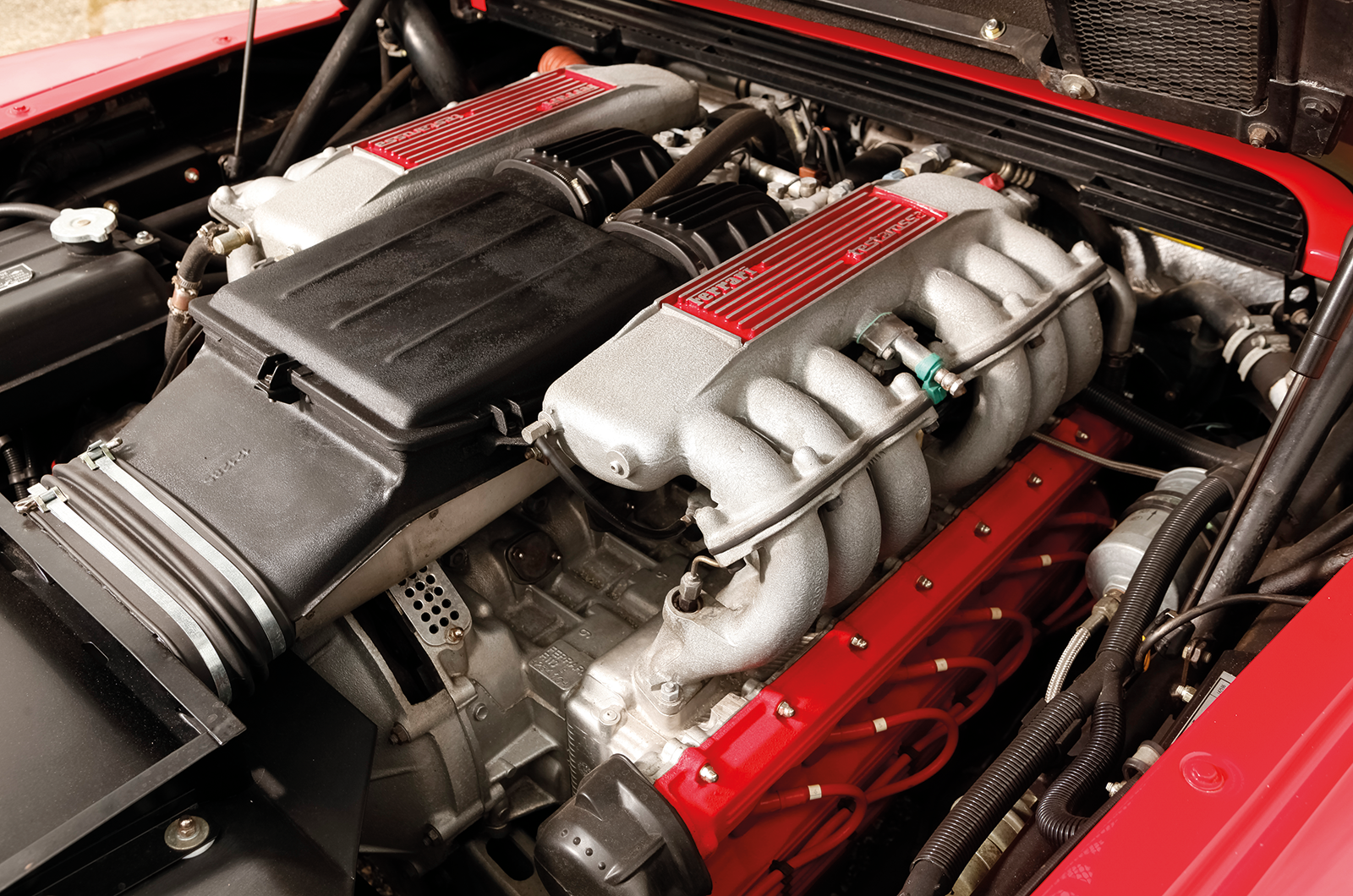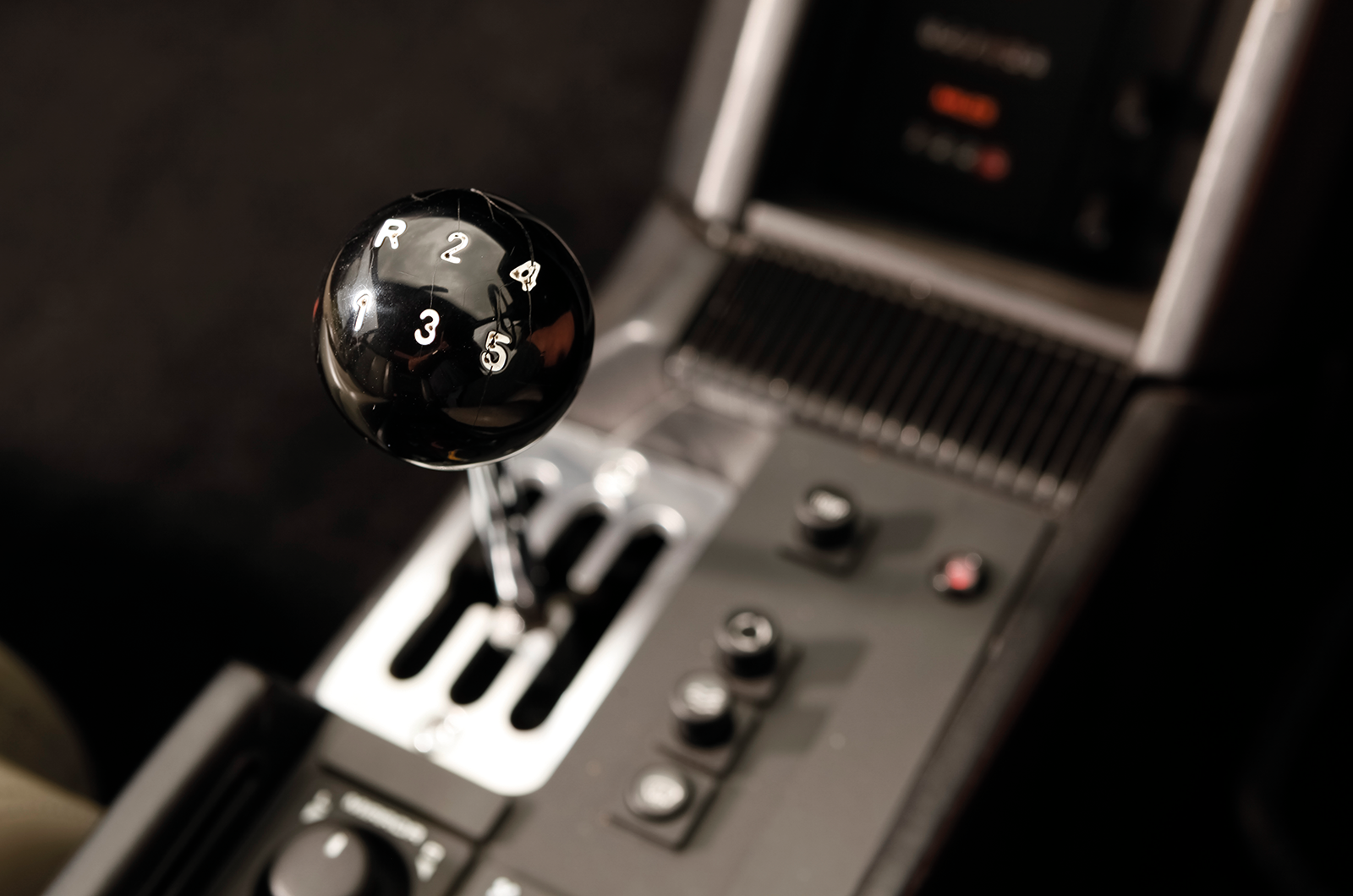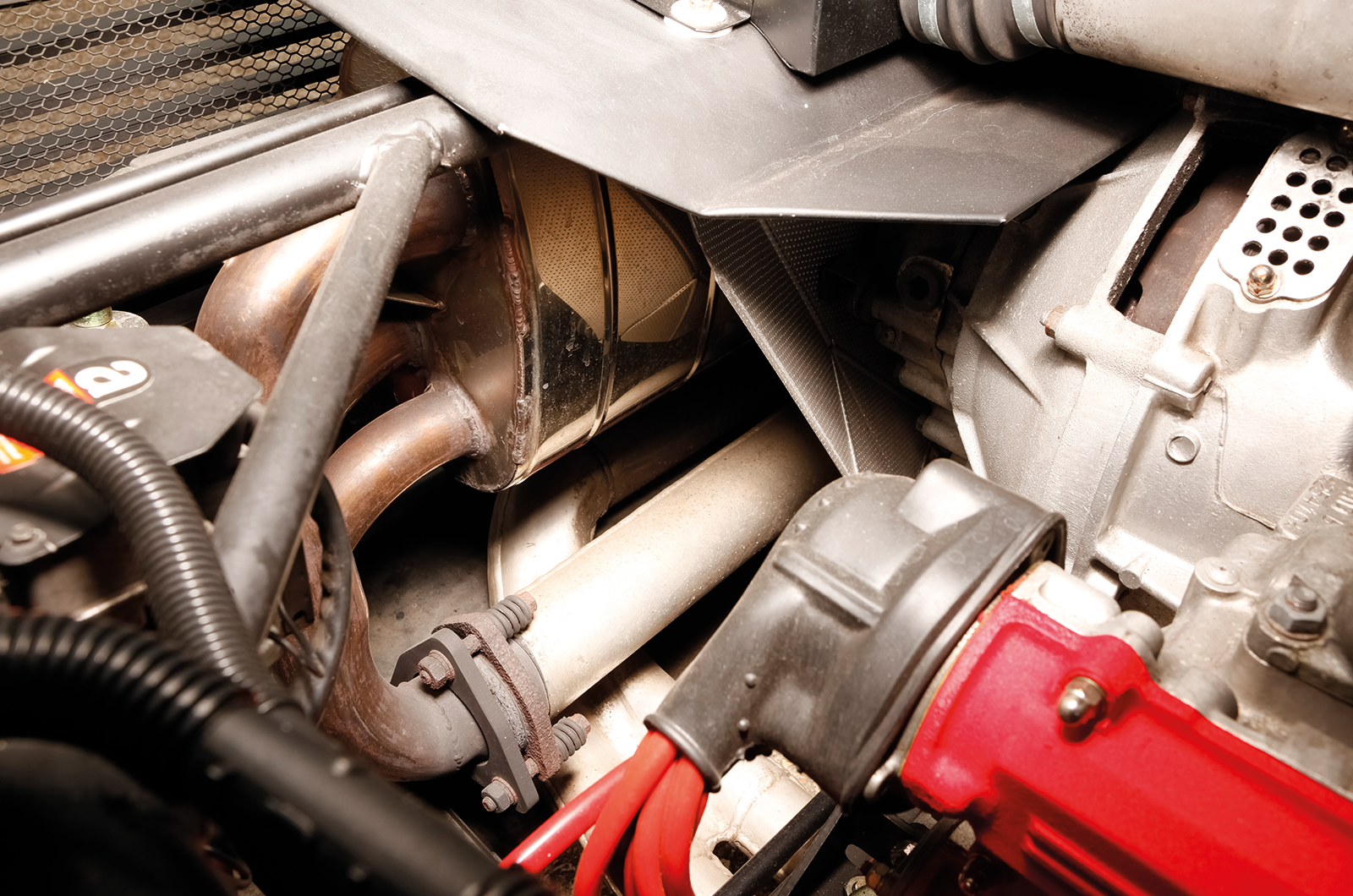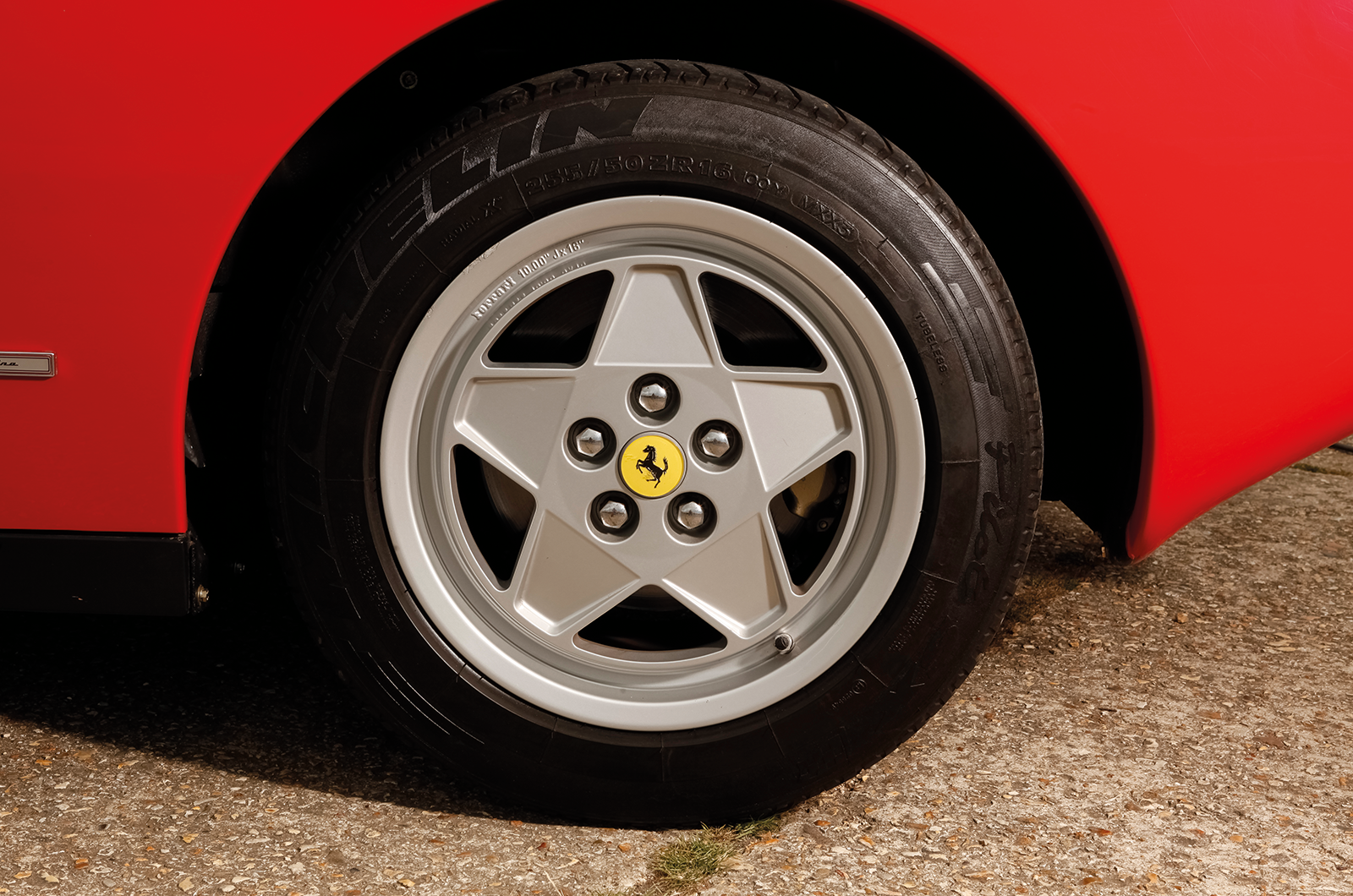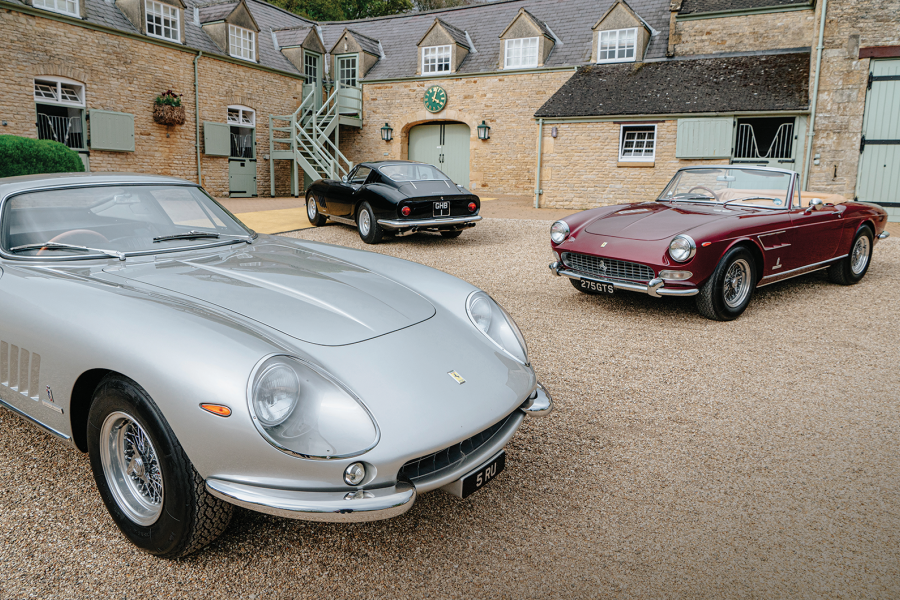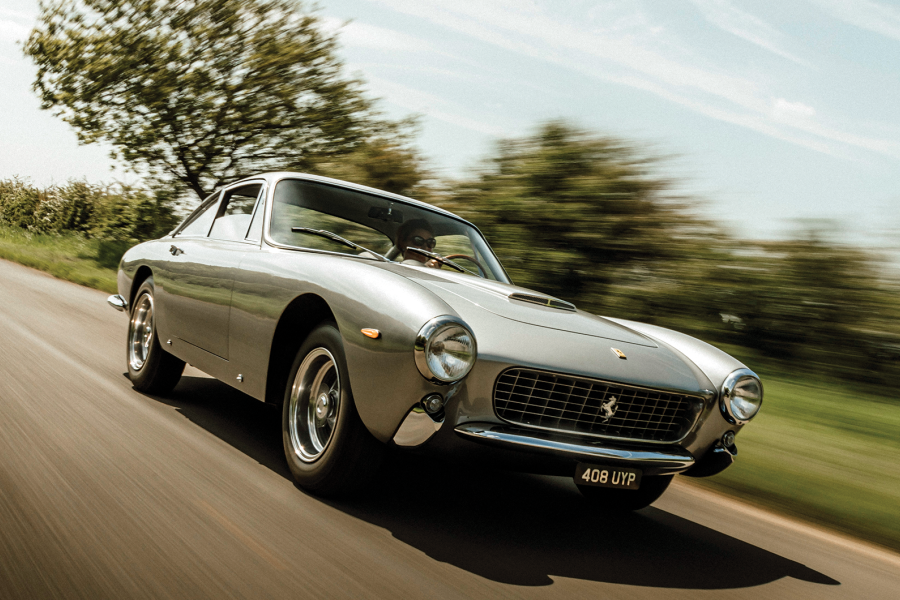
Why you’d want one
Lighter, more powerful and more aerodynamic than the Ferrari Berlinetta Boxer from which it was developed, the Testarossa featured four-valve heads, improved fuel injection and electronic ignition.
Pininfarina’s dramatic styling emphasised the car’s 6ft 6in (1.98m) width, which resulted from placing radiators either side of the already seriously wide engine, to reduce cockpit heat resulting from piping to front radiators on the BB.
It looks absolutely stunning – but progress on narrow New Forest roads was rather stilted during our photoshoot because the Ferrari simply could not pass oncoming traffic without one or the other taking to the verge.
Away from narrow country lanes, the Testarossa is an effortless continent-muncher, and surprisingly relaxing to drive thanks to its enormous torque and competent electronic engine control.
Motor couldn’t stop praising the flat-12 unit in its 1985 test: ‘For its reserves of turbine-smooth power between 1000 and 7000 revs, there is no other engine made that can match it.’ It sounds brilliant, too (Motor eulogised even more about that).

